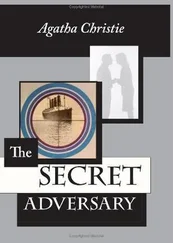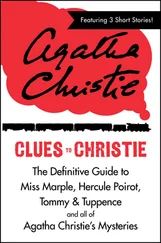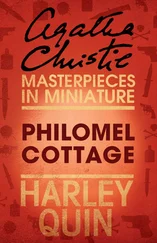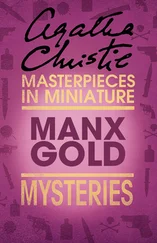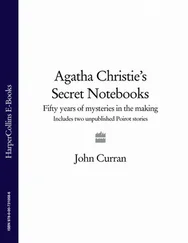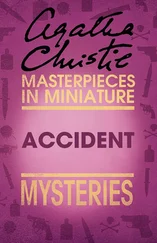1 ...7 8 9 11 12 13 ...88 From the late 1940s onwards her handwriting steadily ‘improved’ so that by the early 1950s and, for example, After the Funeral in Notebook 53, the notes could be read straight off by someone seeing them for the first time. She was ruefully aware of this herself. In November 1957, in a letter about Ordeal by Innocence, she writes, ‘I am asking Mrs. Kirwan [her secretary Stella Kirwan] to type this to you knowing what my handwriting is like’, and again in August 1970 she describes her own handwriting as ‘overlarge and frankly rather illegible’. And she writes this after the improvement!
For some years, there has been a theory in the popular press that Agatha Christie suffered from dyslexia. I have no idea where this originated but even a cursory glance at the Notebooks gives the lie to this story. The only example that could be produced in evidence is her struggle with ‘Caribbean’ and ‘Carribean’ throughout the notes for A Caribbean Mystery —and I think in that she would not be alone!
…a kind of sketch of a plot…
Dotted irregularly throughout the Notebooks are brief jottings dashed down and often not developed any further at the time. This is what Christie means by ‘a sketch of a plot’; these jottings were all she needed to stimulate her considerable imagination. The ideas below are reproduced exactly as they appear on the page of the Notebooks, and some of them occur in more than one Notebook (examples of similar jottings are given later in this book). All of them were to appear, to a greater or lesser degree, in her titles. The first two are major plot devices and the remaining two are minor plot features:
Poirot asks to go down to country—finds a house and various fantastic details [see The Hollow in Chapter 12]
Saves her life several times [see Endless Night in Chapter 12]
Dangerous drugs stolen from car [see Exhibit F: ‘The House of Dreams’]
Inquire enquire—both in same letter [see A Murder is Announced in Chapter 5]
…it often stimulates me, if not to write that identical plot at least to write something else…
Throughout her career one of Christie’s greatest gifts was her ability to weave almost endless variations on seemingly basic ideas. Murderous alliances, the eternal triangle, victim-as-murderer, disguise—down the years she used and reused all these ploys to confound reader expectation. So when she writes about being stimulated to write ‘something else’ we know that she could do this effortlessly. Something as seemingly unimportant or uninspiring as the word ‘teeth’ could inspire her and, in fact, she used that very idea in at least two novels— One, Two, Buckle my Shoe and, as a minor plot element, in The Body in the Library.
Identical twins (one killed in railway smash) survivor—claims to be the rich one (teeth?)
Poor little rich girl—house on hill—luxury gadgets etc.—original owner
Stamp idea—man realises fortune—puts it on old letter—a Trinidad stamp on a Fiji letter
Old lady in train variant—a girl is in with her—later is offered a job at the village—takes it
As we shall see, the ‘Stamp idea’ features in a short story and a play over 15 years apart; the ‘Old lady in train’ ploy appears in two novels almost 20 years apart; and the ‘Poor little rich girl’ inspired a short story and, 25 years later, a novel.
Exhibit A: The Detection Club
’It’s rather early to ring you up but I want to ask you a favour.’
‘Yes?’
‘It is the annual dinner of our Detective Authors’ Club.’
Third Girl, Chapter 2
The Detection Club, as its name suggests, is a club for writers of detective stories. Although the exact date is uncertain, it was probably founded in 1929. Anthony Berkeley and Dorothy L. Sayers were two of the founders and by the early 1930s all of the major writers of detective fiction of the day, including Agatha Christie, were members. Only writers of classical detective fiction, as distinct from crime writers in general, were eligible to join. It was not a professional body campaigning to improve the lot of crime writers; rather it was a glorified dining club with G.K. Chesterton, creator of Father Brown, as its first President, followed in 1936 by E.C. Bentley, author of the famous Trent’s Last Case, and, from 1958 to her death in 1976, Agatha Christie. She agreed to this role on the understanding that she would never have to give a speech. Membership was by invitation only and all new members had to undergo an initiation ceremony (designed by Dorothy L. Sayers), involving the President in ceremonial robes, a procession with candles and the initiate swearing an oath, while placing a hand on Eric the Skull, to uphold the club’s rules.
Although these rules were unwritten and the ritual itself, designed by Sayers, light-hearted, the intentions behind them were serious and admirable. In an effort to raise the literary level of the detective story and to distinguish it from the thriller or ‘shocker’, candidates had to promise:
 to honour the King’s English;
to honour the King’s English;
 never to conceal a vital clue from the reader;
never to conceal a vital clue from the reader;
 to adhere to detection as distinct from ‘Divine Revelation, Feminine Intuition…Coincidence or Acts of God’;
to adhere to detection as distinct from ‘Divine Revelation, Feminine Intuition…Coincidence or Acts of God’;
 to observe ‘a seemly moderation in the use of Gangs, Death-Rays, Ghosts, Mysterious Chinamen and Mysterious Poisons unknown to Science’;
to observe ‘a seemly moderation in the use of Gangs, Death-Rays, Ghosts, Mysterious Chinamen and Mysterious Poisons unknown to Science’;
 never to steal or disclose the plots of other members.
never to steal or disclose the plots of other members.
In the early days the Detection Club produced collaborative novels and, in more recent times, short story collections. In the early ventures different hands wrote succeeding chapters, each subsequent writer taking cognisance of the plot developments of his or her predecessor. Agatha Christie contributed to the three earliest publications, The Scoop in 1930, Behind the Screen the following year and the full-length novel The Floating Admiral in 1932. The first two shorter efforts were read in instalments on BBC radio and subsequently published in The Listener, finally appearing in book form in 1983. Apart from Christie, the collaborators on The Scoop were Dorothy L. Sayers, Anthony Berkeley, E.C. Bentley, Freeman Wills Crofts and Clemence Dane; Ronald Knox and Hugh Walpole replaced Crofts and Dane for Behind the Screen.
In the case of The Floating Admiral each contributor had to include a proposed solution as well as a chapter in an effort to prevent complications being introduced merely to make life difficult for the following contributor. Christie’s contribution is, unfortunately, the shortest in the book, but her proposed solution is a typically ingenious one. However, she decided that the time and effort that went into one of these productions could be more profitably spent on her own writing and she politely declined to involve herself in any further titles.
The Detection Club in the Notebooks
The main reference to the Detection Club in the Notebooks is in Notebook 41, the first page of which is headed ‘Ideas 1931’ (despite the uncertainty about its date of foundation, by the time of this note the club was well established):
Читать дальше
Конец ознакомительного отрывка
Купить книгу
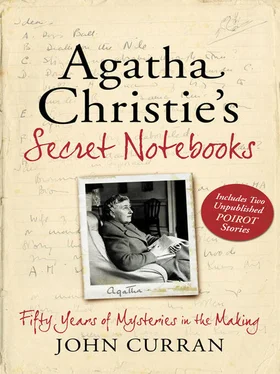
 to honour the King’s English;
to honour the King’s English;
